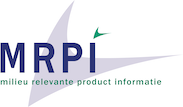A more recent version of this data set exists in the database.
Process information
| Key Data Set Information | |
| Location | Europe |
| Geographical representativeness description | Dunkirk |
| Reference year | 2023 |
| Name |
|
| General comment on data set | hydraulic binder not compliant with EN 197-1Scope and type: The type of this EPD is Cradle-to-Gate A1-A3. All major steps from the extraction of natural resources to the factory gate are included in the environmental performance of the manufacturing phase, except those that are not relevant to the environmental performance of the product. The software SimaPro is used to perform the LCA. The background databases used is EcoInvent 3.6 PRODUCT STAGE CONSTRUCTION USE STAGE END OF LIFE BENEFITS AND PROCESS STAGE LOADS BEYOND THE STAGE SYSTEM BOUNDARIES x x x ND ND ND ND ND ND ND ND ND ND ND ND ND ND X = Modules Assessed ND = Not Declared LCA process diagram according to EN 15804 7.2.1Representativeness: This EPD is representative for the Ecocem Dunkirk production facility.Calculation rules: Data quality Data flows have been modeled as realistically as possible. Data quality assessment is based on the principle that the primary data used for processes occurring at the production site is selected in the first instance. Where this is not available, other reference data is selected from appropriate sources. Data collection period The dataset is representative for the production processes used in 2021. Methodology and reproducibility The process descriptions and quantities in this study are reproducible in accordance to the reference standards that have been used. The references of all sources, both primary and public sources and literature, have been documented. In addition, to facilitate the reproducibility of this LCA, a full set of data records has been generated. Allocation Allocation of emissions from steel production to the purchased GBS are in accordance with the French regulations mentioned in the NF EN 15804+A2/CN and the economic allocation recommended by the French government DHUP Œ Department of Housing, Urban Planning and Landscape.Scenarios and additional technical information A1. Raw materials supply Emissions from the steel production are allocated onto the blast furnace slag in accordance with the NF EN 15804+A2/CN and the economic allocation recommended by the French government DHUP Œ Department of Housing, Urban Planning and Landscape. A2. Transport of raw materials to manufacturer The transportation of the suppliers to Ecocem Dunkirk is done by truck. A3. Manufacturing The production consists of grinding and drying of Granulated Blastfurnace Slag GBS and depending on the end product also mixing with other purchased materials.Declaration of SVHC: None of the substances contained in the product are listed in the fiCandidate List of Substances of Very High Concern for authorisationfl, or they do not exceed the threshold with the European Chemicals Agency.More information: €www.ecocemglobal.com/fr |
| Copyright | Yes |
| Owner of data set | |
| Quantitative reference | |
| Reference flow(s) |
|
| Time representativeness | |
| Data set valid until | 2028 |
| Time representativeness description | valid from (Monday 11 December 2023) through (Monday 11 December 2028) |
| Technological representativeness | |
| Technology description including background system | Hydraulic binder not compliant with EN 197-1, used for the manufacture of concrete, mortars, grouts, coatings and other mixtures intended for construction and the manufacture of construction products. COMPONENT > 1% of total mass [%] Cement Limestone Filler Blast Furnace Slag |
Modelling and validation
| Subtype | specific dataset | ||||
| Data sources, treatment and representativeness | |||||
| Data source(s) used for this data set | |||||
| Completeness | |||||
| Validation | |||||
| |||||
| Compliance Declarations | |||||
| Compliance |
Compliance system name
|
Approval of overall compliance
|
Nomenclature compliance
|
Methodological compliance
|
Review compliance
|
Documentation compliance
|
Quality compliance
|
| Compliance |
Compliance system name
|
Approval of overall compliance
|
Nomenclature compliance
|
Methodological compliance
|
Review compliance
|
Documentation compliance
|
Quality compliance
|
Administrative information
| Data generator | |
| Data set generator / modeller | |
| Data entry by | |
| Time stamp (last saved) | 2023-12-11T00:00:00 |
| Data set format(s) | |
| Publication and ownership | |
| UUID | 040a18ec-686e-4831-a1a9-05605db0f5bb |
| Data set version | 00.01.000 |
| Registration authority | |
| Registration number | 1.1.00486.2023 |
| Owner of data set | |
| Copyright | Yes |
| License type | Free of charge for all users and uses |
Environmental indicators
Indicators of life cycle
